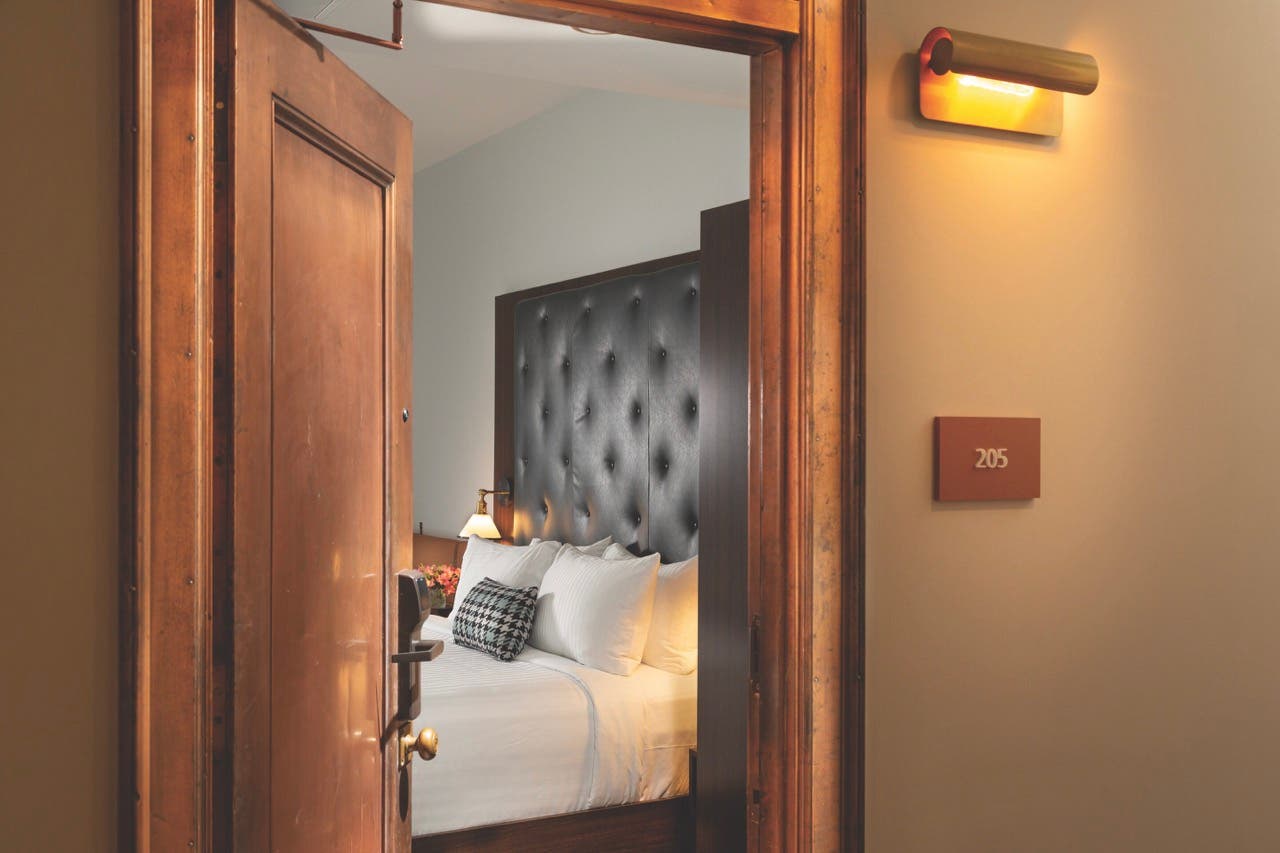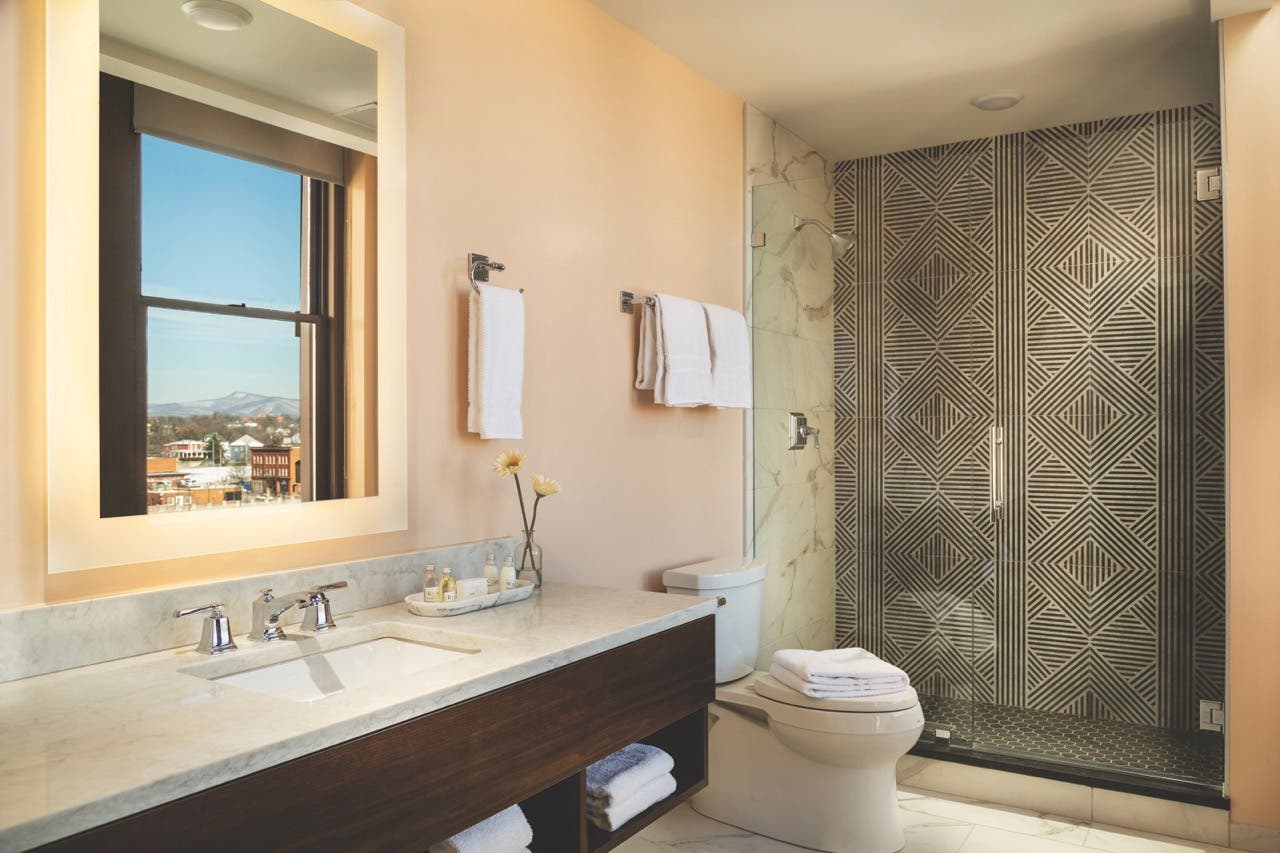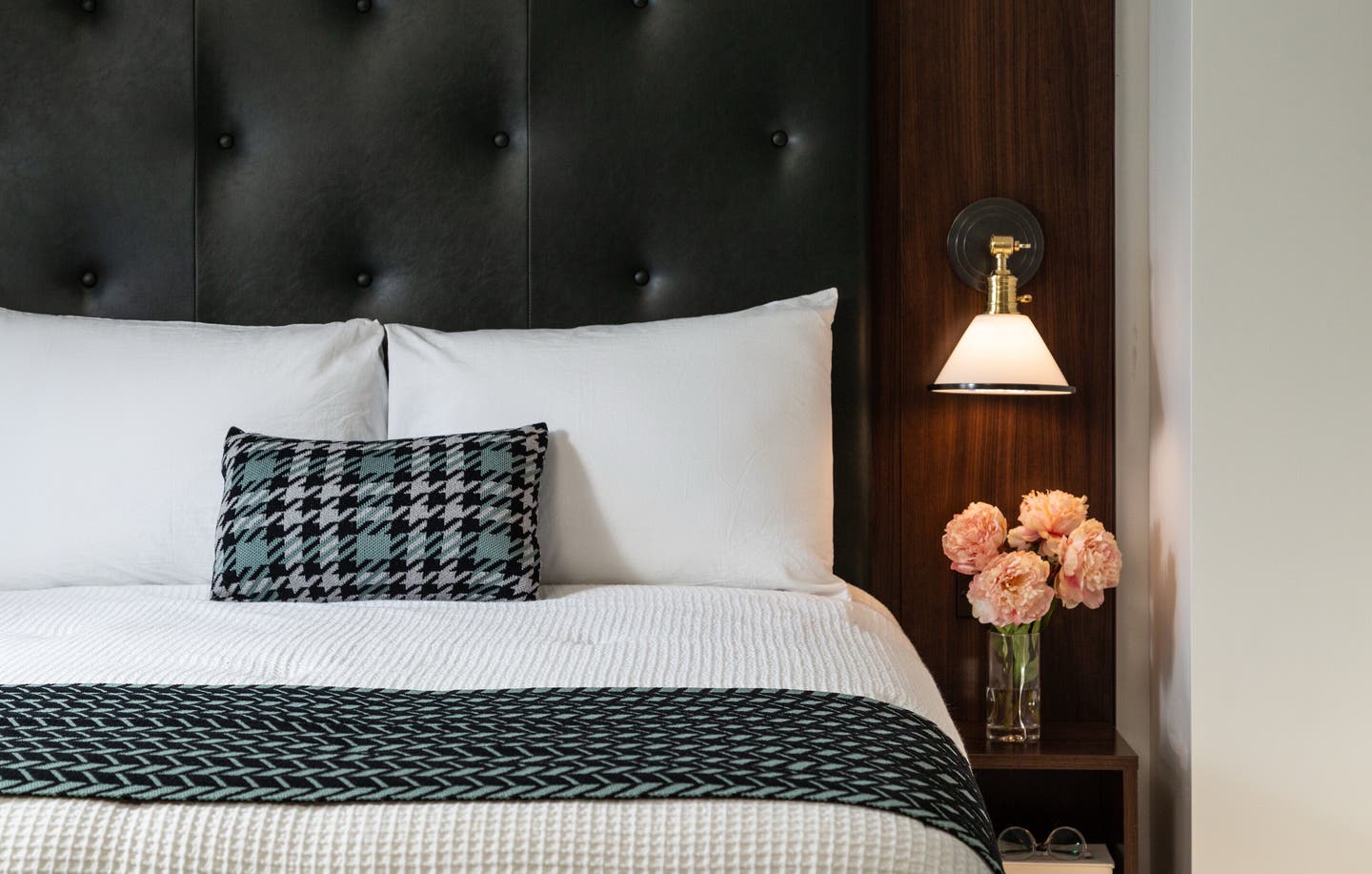
Public Buildings
Revitalizing History: Inside the Award-Winning Transformation of Roanoke’s Liberty Trust Building
Adapting for a new use a historic building that engages and resonates with a new generation of users involves far more than restoring the facade, shoring up the infrastructure, and replicating its significant architectural elements.
It means creating a unique experience that takes the history of the structure and makes it come alive in its context in a contemporary manner that invites people to use it.
A prime example is the conversion of Roanoke, Virginia’s Liberty Trust Building, which won a 2023 Palladio Award for interior design work by Glavé & Holmes Architecture, into The Liberty Trust Hotel.
Originally the headquarters of the First National Bank, Roanoke’s premier financial institution, the seven-story 1910 Classical Revival monolith—it covers nearly 40,000 square feet—is not only a Virginia Historic Landmark, but also is listed on the National Register of Historic Places.
“Our big-picture goal was the conversion from historic bank to boutique hotel,” says interior designer Jessica Ritter, CID, IIDA, of Richmond, Virginia-based Glavé & Holmes Architecture. “We breathed some life into it within the framework of its historic character. And we created something that is different from any of the other hotels in the city. We wanted the hotel to be unique and charming and a destination people would flock to when looking for overnight stays, events, or a drink at the bar. We know that travelers and guests highly value an experience when choosing where to stay and frequent, now more than ever.”
The structure, which locals refer to as the Liberty Trust Building, is a veteran of conversions and renovations but most recently had been not used near to capacity, save a few small-office tenants.
Its distinguishing features, including the granite exterior adorned with carved rosettes, the balustrade roof, the Roman Ionic columned entrance, the bronze main doors and the Doric columned main hall that is modeled after the Temple of Apollo at Delos, remained largely intact.
And Ritter and her team of interior designers—Veronica Ledford and Leah Embrey—were fortunate because the floor plans didn’t require invasive alterations.



The top floors, which now have 54 rooms for hotel guests, had originally been bank offices that were relatively easily converted into hotel guest rooms with minor alterations and the addition of bathrooms.
The owners had applied for historic tax credits, and the major challenge of the project was meeting the stringent requirements of the Virginia Department of Historic Resources.
Although the team has worked on numerous projects that have restrictions, Ritter notes that for The Liberty Trust Hotel, “there were a lot of little nuanced things to take into account that we don’t always encounter. We were limited in what we could touch or change that was original. And any changes that were made needed to be obvious that they were new.”
This meant coming up with a design that incorporated what Ritter calls “exposed portions of flooring in strange and unusual places that were not consistent because of previous renovations, but that showed the original character and footprints of interior rooms.”
Thus, the exposed sections of terrazzo at the entrance to many guest rooms remain although the team was allowed to add modern carpet tiles to the rest of the space. And the missing copper-clad and trimmed entrance doors to each room were replaced not with replicas but with simple and clean wooden ones that complement the originals and that are not intended to seem as though they could have been originals.
The owner chose to pursue tax credits that included the value of built-in furnishings.
“To satisfy the rules, the furniture had to be designed so that if it is ever removed, it’s obvious that it’s gone, so we had to trim around each piece,” Ritter says, adding that this part of the project “required extensive coordination with the millwork and electrical trades to ensure proper rough-in locations to align the furnishings that would come much later in the process.”


To highlight the building’s history, Ritter and her team designed leather headboards for the beds in bank-passbook green, and in homage to the copper doors added throws in a patinaed-copper colorway.
The vintage-style telephones, which are bound to get younger guests talking, are another defining feature. Black with rotary dials, they call up the 1930s.
The grand lobby was restored, and its enormous chandeliers, brass Colonial Revival fixtures that had been added later, were replaced with custom lights that hint at the history of the bank building but in a contemporary manner.
The partial-height walls that had been added to the middle of the space at some earlier date were removed to recreate the lobby’s original sense of expansiveness. One of the partial-height marble walls that was historic to the building as a teller counter became the front of the bar.
The new lobby’s lounge evokes the past with curved contemporary settees that are upholstered in baby-pink, a popular 1930s color, and the new rugs are patterned with classic motifs blown up to give a modern feel.
The old bank vault, which remained largely intact, complete with its original door, has been repurposed as a private gathering or wine-tasting space.
The new lobby also has a glamorous reception/concierge desk that looks as though it were imported from the past.
These subtle cues are augmented by the name—what else would it be called but The Liberty Trust Hotel? —and its logo, which incorporates elements of the historic building’s architecture.
All of the new and old elements work together to create a complete experience that immerses visitors in history without removing them from the present.
“The beauty of the original architecture is an experience in and of itself,” Ritter says. “We tried hard to make it current without making it trendy.”
The Liberty Trust Hotel, a downtown icon, attracts locals and visitors alike who either stay or stop in for a cocktail at the lobby bar.
“It’s become an asset to the community,” Ritter says. TB
KEY SUPPLIERS
Interior Design
Glavé & Holmes Architecture
Architect
Blazer and Associates
Historic Preservation Consultant
Hill Studio
Contractor
R.L. Price Construction
Custom Casework Fabricators
Commercial Interiors; Contraxx
Lobby Lighting
Hudson Valley








